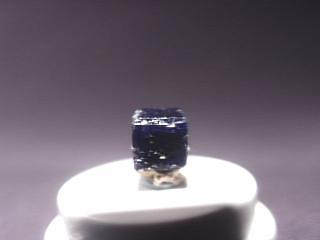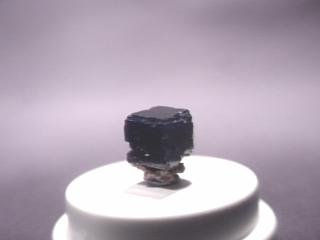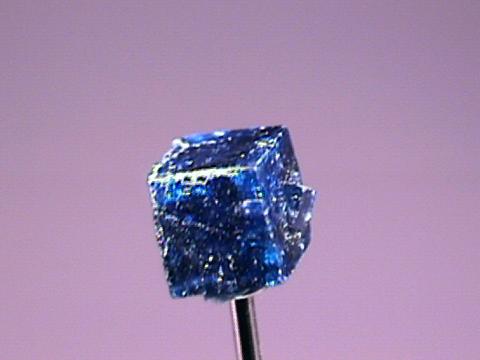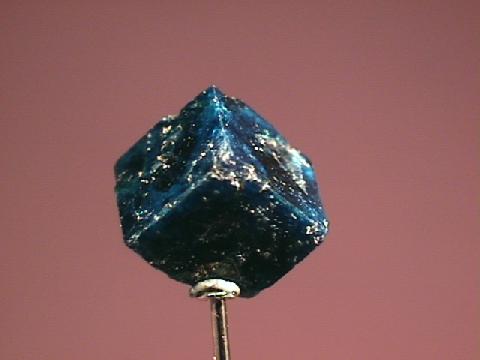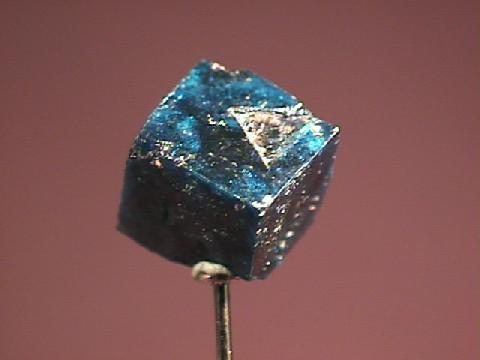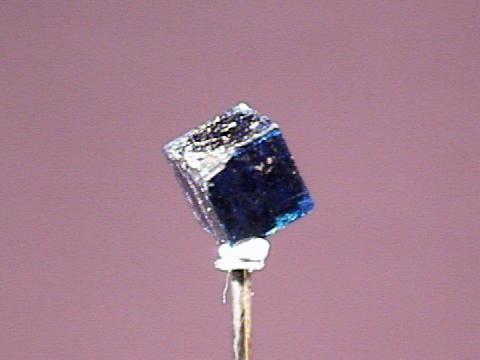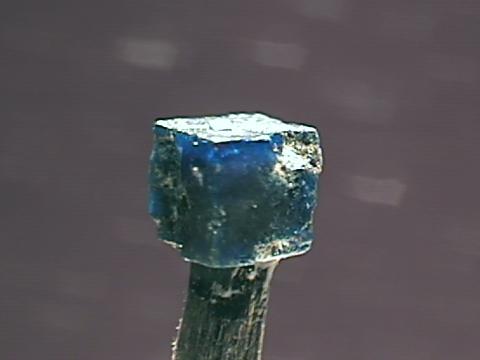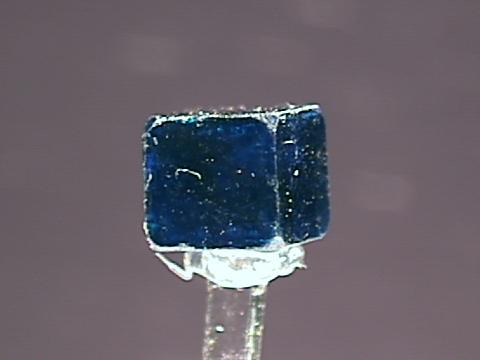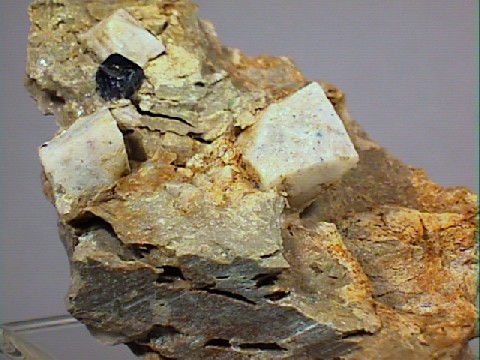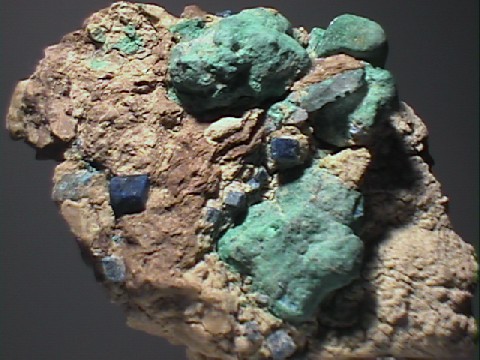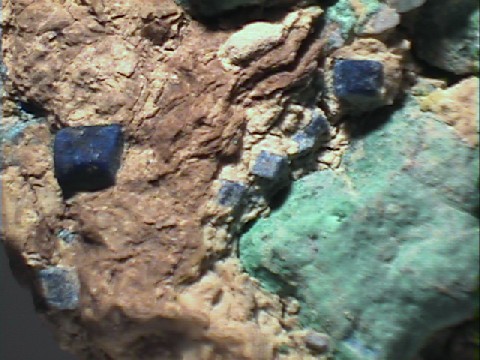 THE MINERAL BOLEITE
THE MINERAL BOLEITE
- Chemistry: Pb26Cu24Ag10Cl62(OH)48 - 3H2O, Hydrated Lead Copper Silver Chloride Hydroxide
- Class: Halides
- Uses: A very minor ore of silver, copper and lead and as mineral specimens.
Specimens
Boleite is a mineral of crystallographic curiosity and of great interest to collectors of twins, silver minerals and rare halides. And hey . . . its pretty too! Its indigo blue color is distinctive and attractive and some crystals are cut as gemstones. Boleite is technically a tetragonal mineral and as such would form rectangular box-like crystals with a square cross-section. However, boleite is always pseudocubically twinned. In other words, each cube-like crystal of boleite is actually composed of three of these rectangular boxes oriented at right angles to each other. The pseudocubes are sometimes modified by tetragonal dipyramid faces which give the look of octahedral faces. Boleite is sometimes incorrectly listed as an isometric mineral.
Boleite is associated with a couple of other rare halide minerals; cumengite, (Pb21Cu20Cl42 (OH)40) and pseudoboleite, (Pb5Cu4Cl10(OH)8 - 2H2O) These halides have similar chemistries to boleite and often form attached to the boleite crystals as epitaxial overgrowths. The cumengite/boleite combination crystal can form six pointed, 3-dimensional star shapes that are truly amazing.
These halides and others with similar chemistries belong to a division in the Halide Class called the Oxyhalides and Hydroxyhalides.
These minerals have either oxygen or hydroxide groups in their chemistries.
The oxygen atom in their chemistries might require their classification in the
Oxides Class of minerals except that their structures are more tied to the halide elements and the oxygens and hydroxides are kind of superfluous to the overall structure.
Some other members of the Oxyhalides and Hydroxyhalides include
bideauxite,
Boleite was named for its type locality at Boleo, Baja California, Mexico. The French colonial town of Santa Rosalia was built near the copper mines that extracted copper from the unusual sedimentary copper deposits. Boleite crystals can still be found in these deposits although they are scarce and not easy to find. The chemistry of boleite is often written as the simpler Pb9Cu8Ag3Cl21(OH)16 - H2O. But this is not the most accurate portrayal of its chemistry. With its pretty color, valuable and interesting chemistry, rarity, history, associations and twinning; boleite is certainly a "must have" for any serious collector.
PHYSICAL CHARACTERISTICS:
- Color is deep blue almost black to a lighter indigo blue.
- Luster is vitreous to pearly.
- Transparency: Crystals are usually translucent but some exceptional specimens are transparent.
- Crystal System is tetragonal; 4 2 2
- Crystal Habits include a pseudocubic habit due to penetration twinning of three individual "twins" oriented perdendicular to each other. Often the crystal will appear to be modified by octahedron faces (actually pseudo-octahedral tetragonal dipyramids). The cubes are rarely over half an inch on each side. Individual twinned crystals are common and are often found loose without any host matrix.
- Cleavage is perfect in one direction.
- Fracture is uneven and brittle.
- Hardness is 3 - 3.5
- Specific Gravity is 5+ (rather heavy for translucent minerals).
- Streak is light greenish-blue.
- Other Characteristics: Notches or interpenetrant angles can be seen in some specimens revealing their true twinned nature.
- Associated Minerals include other rare copper and lead chlorides such as
pseudoboleite,
cumengite,
chloroxiphite , paralaurionite,matlockite , chlorargyrite, bideauxite, atacamite,mendipite and diaboleite. Also found with cerussite, smithsonite, leadhillite, linarite, phosgenite and chrysocolla. Boleite crystals are often loose, but some are found in a clay matrix. - Notable Occurrences include Boleo, Santa Rosalia, Baja California, Mexico; Broken Hill, New South Wales, Australia; Mammoth District, Arizona, USA and Mendip Hills, Somerset, England.
- Best Field Indicators are crystal habit, color, density, streak and locality.

